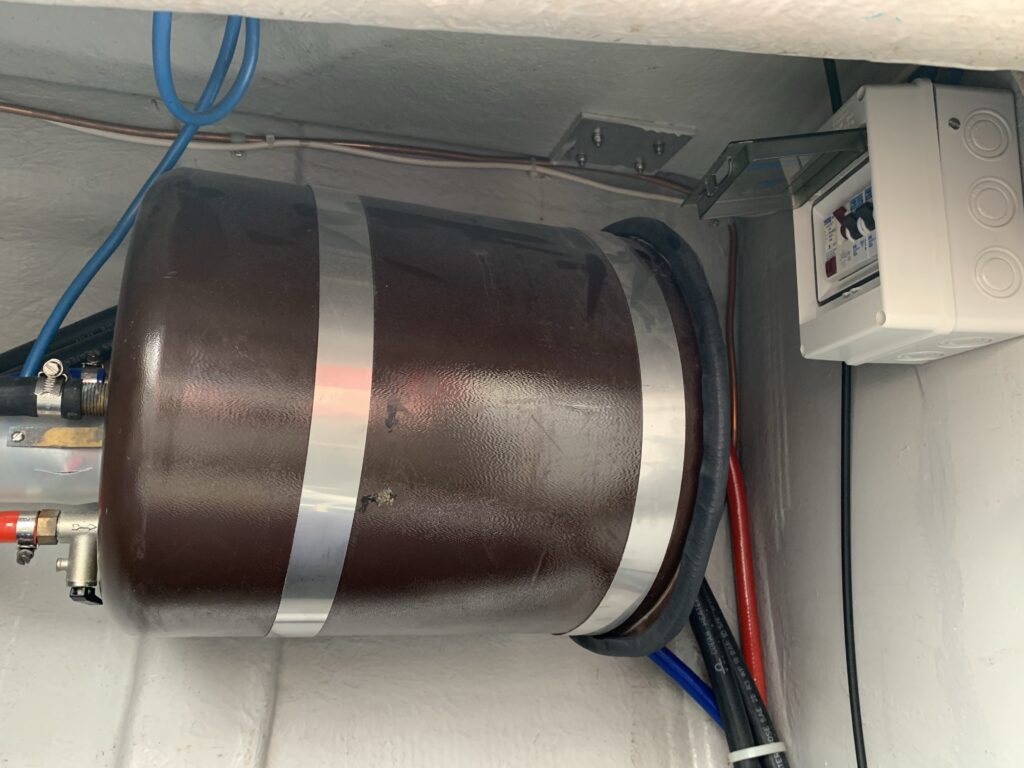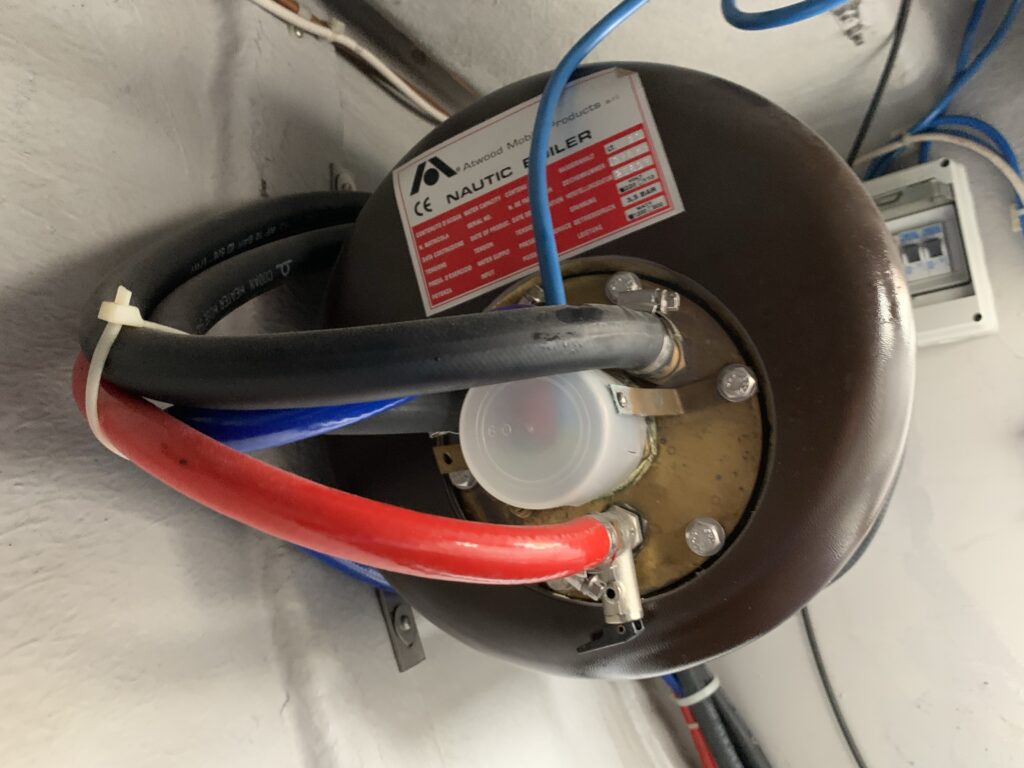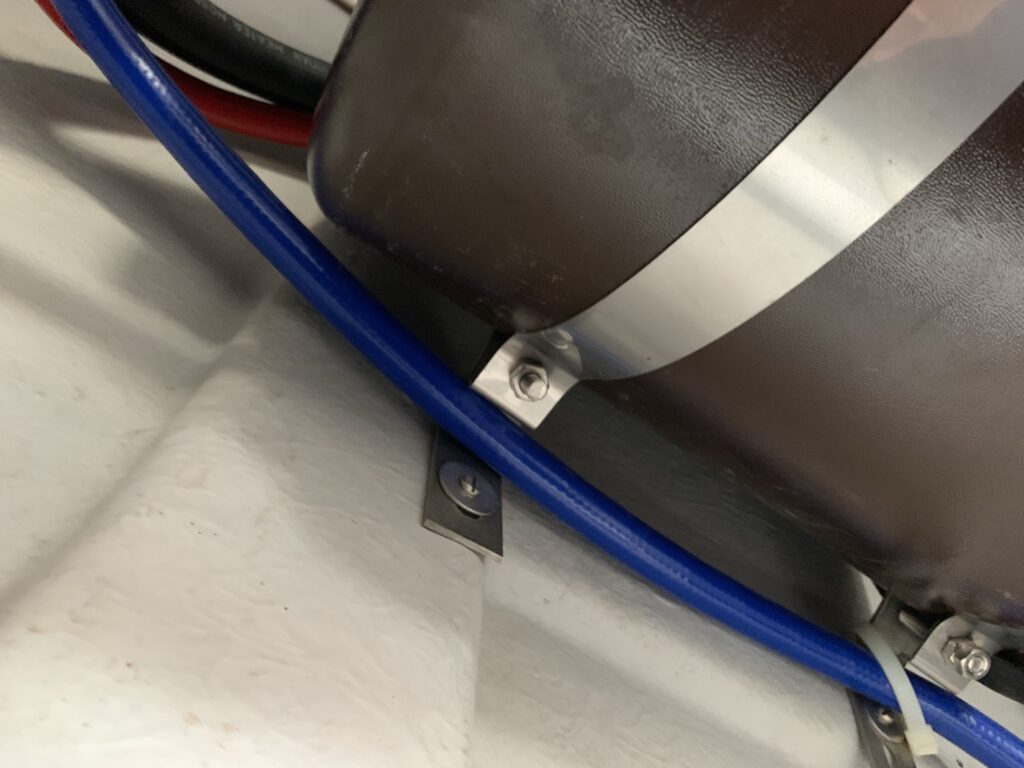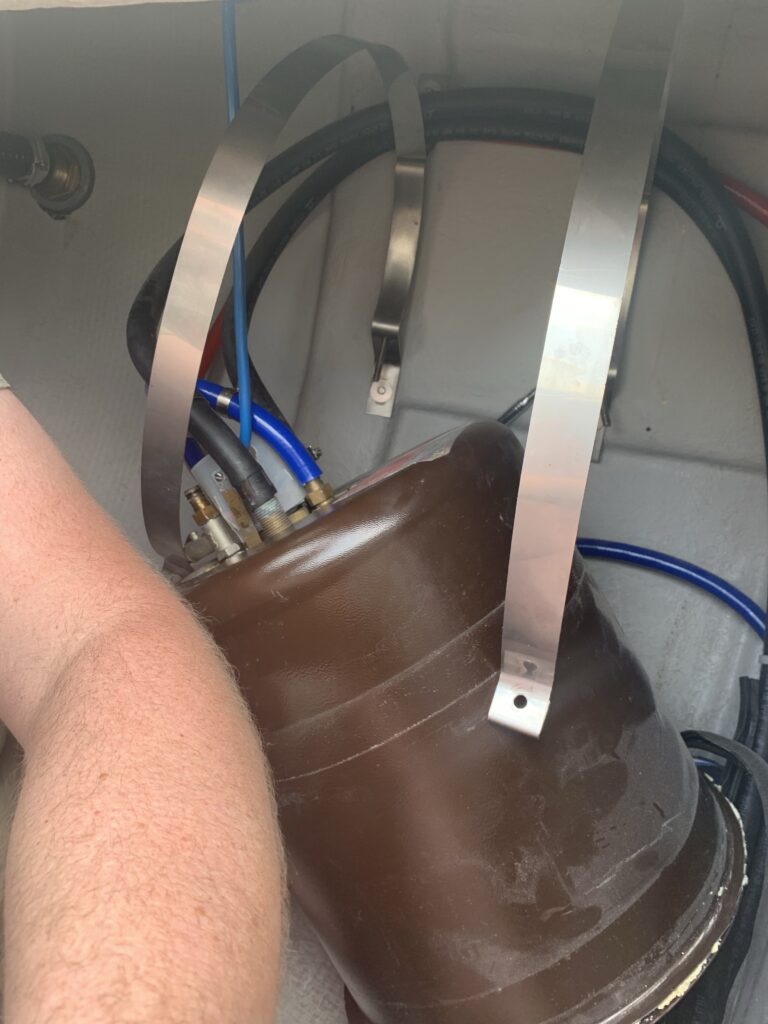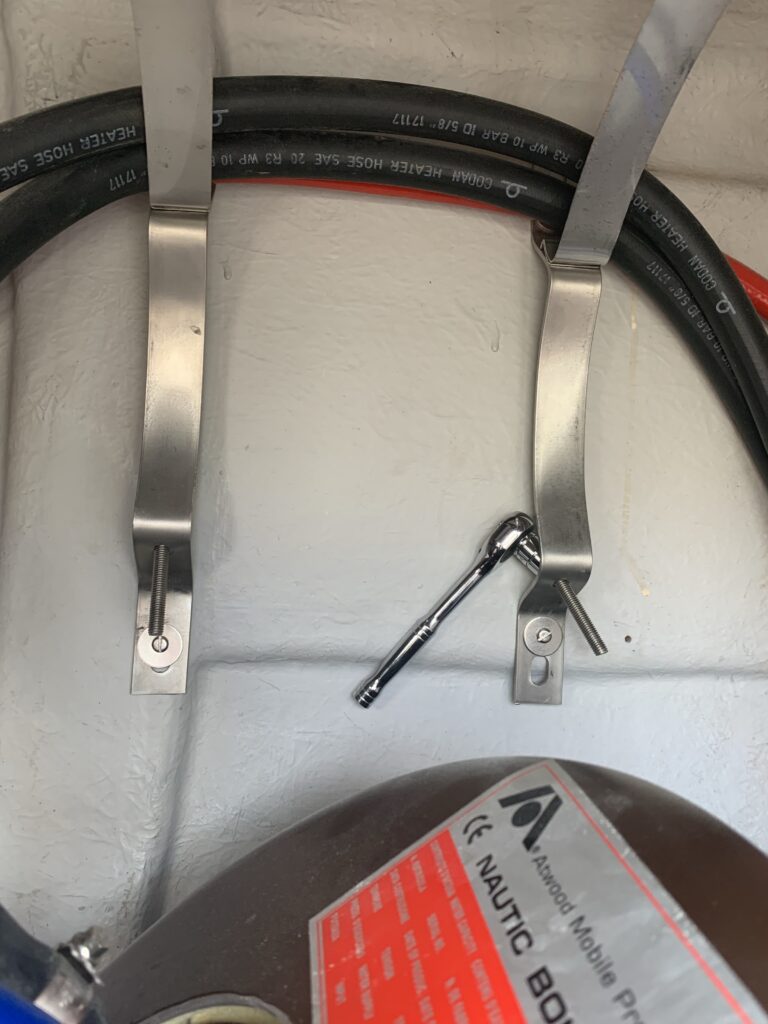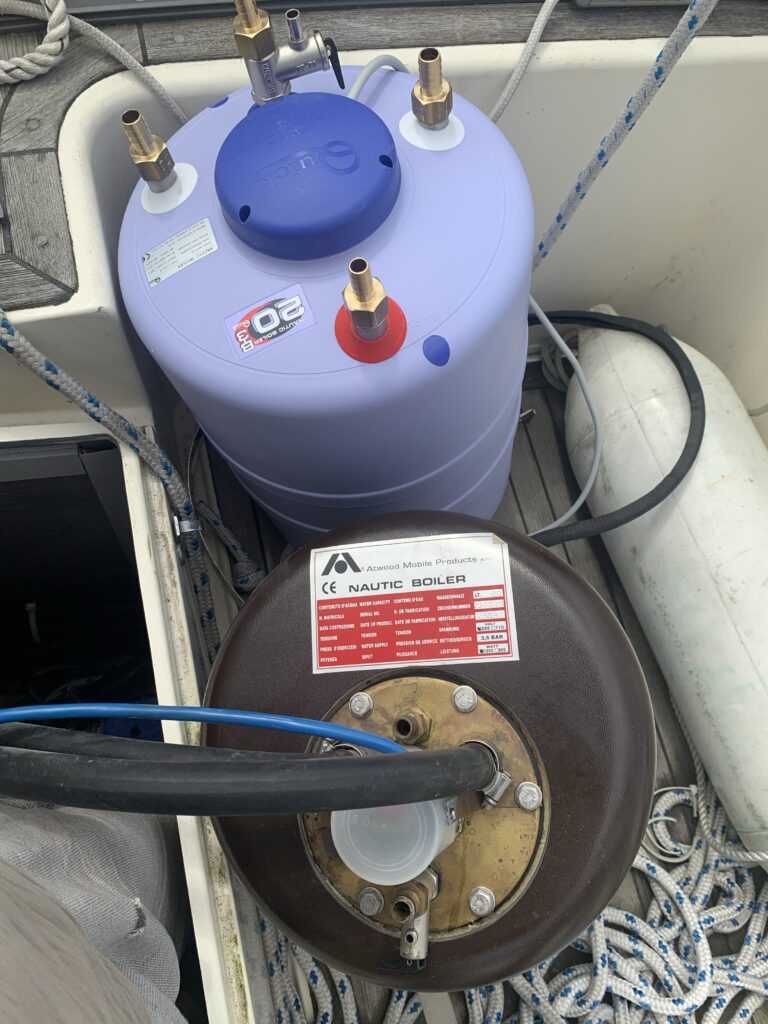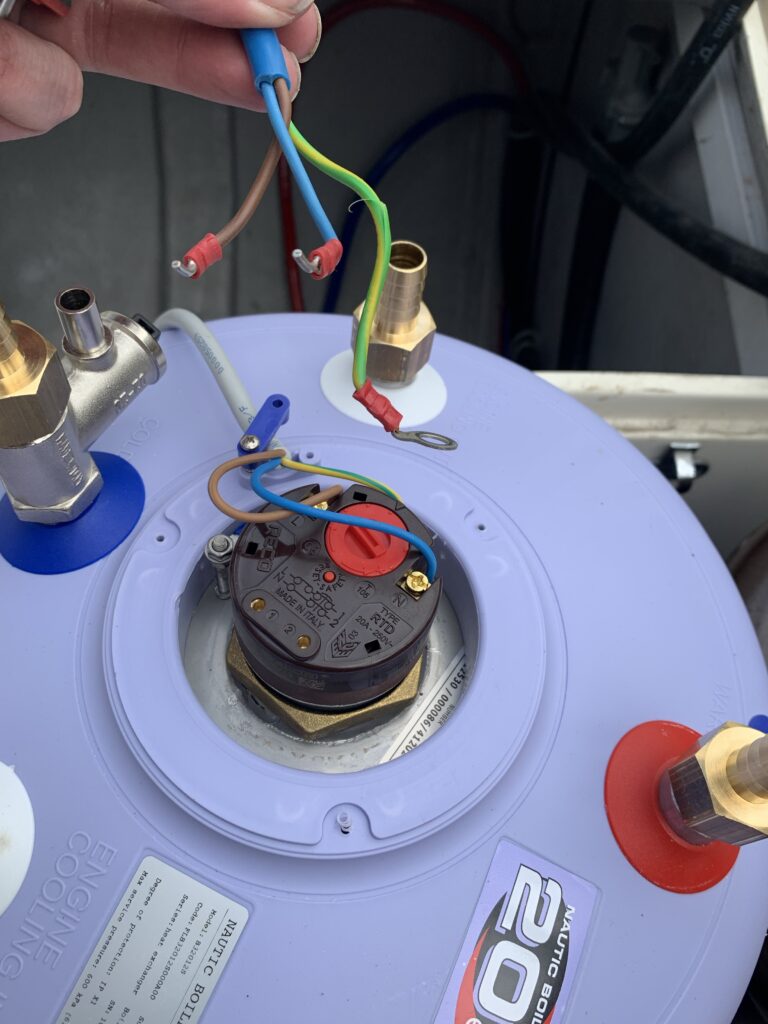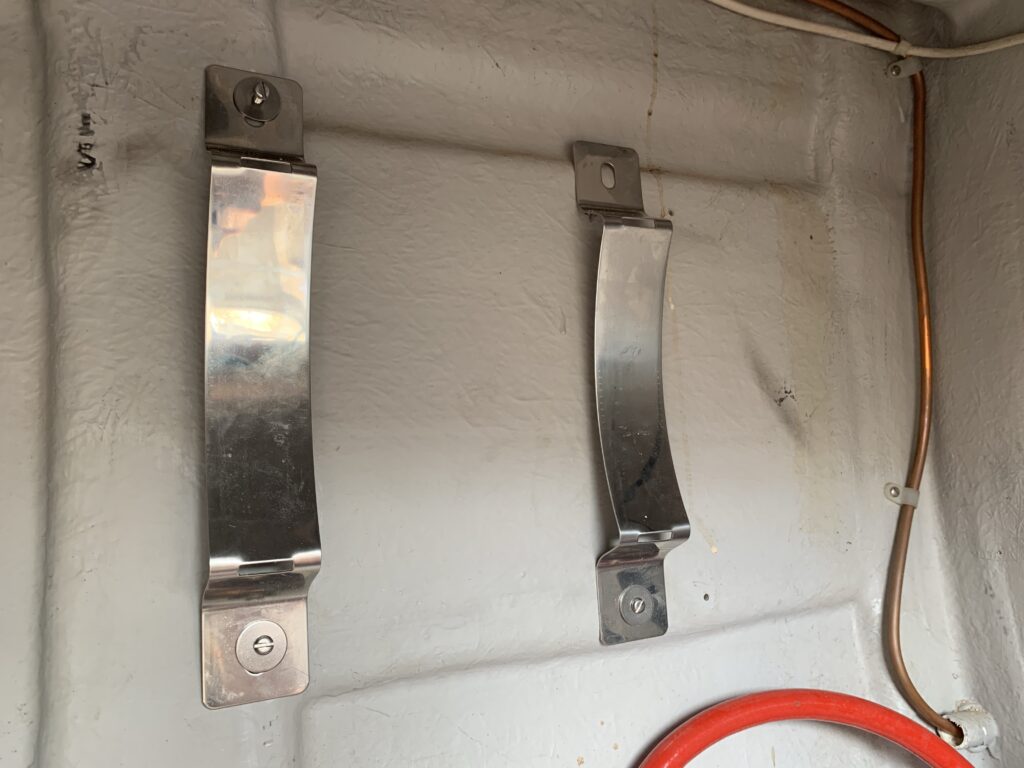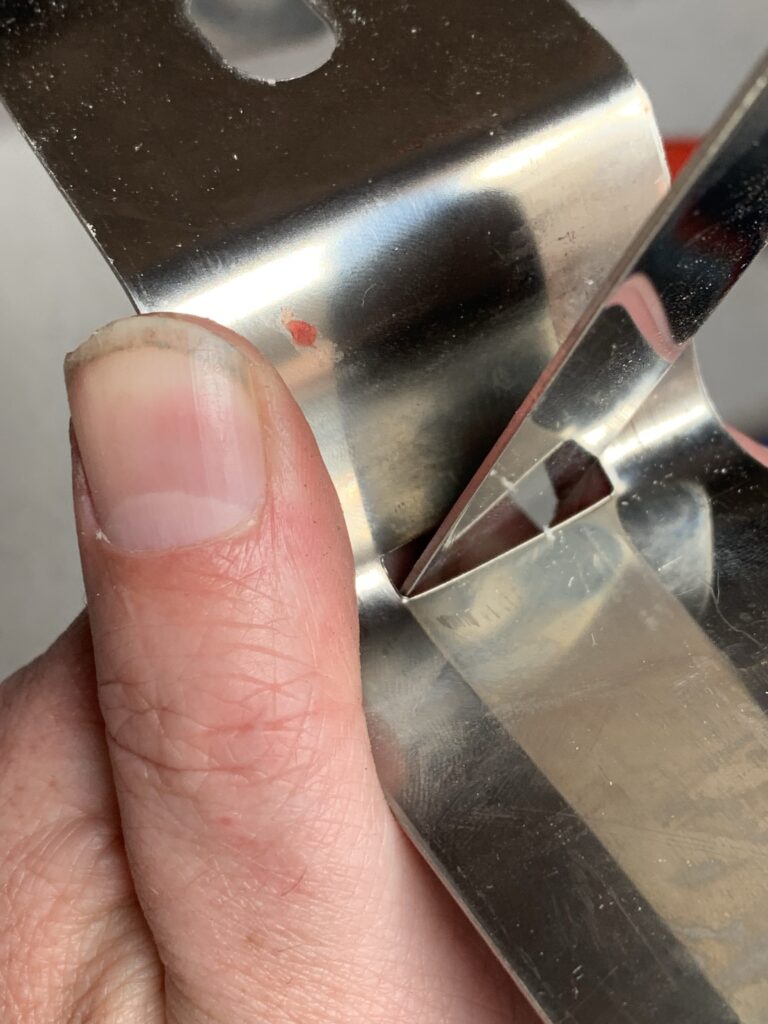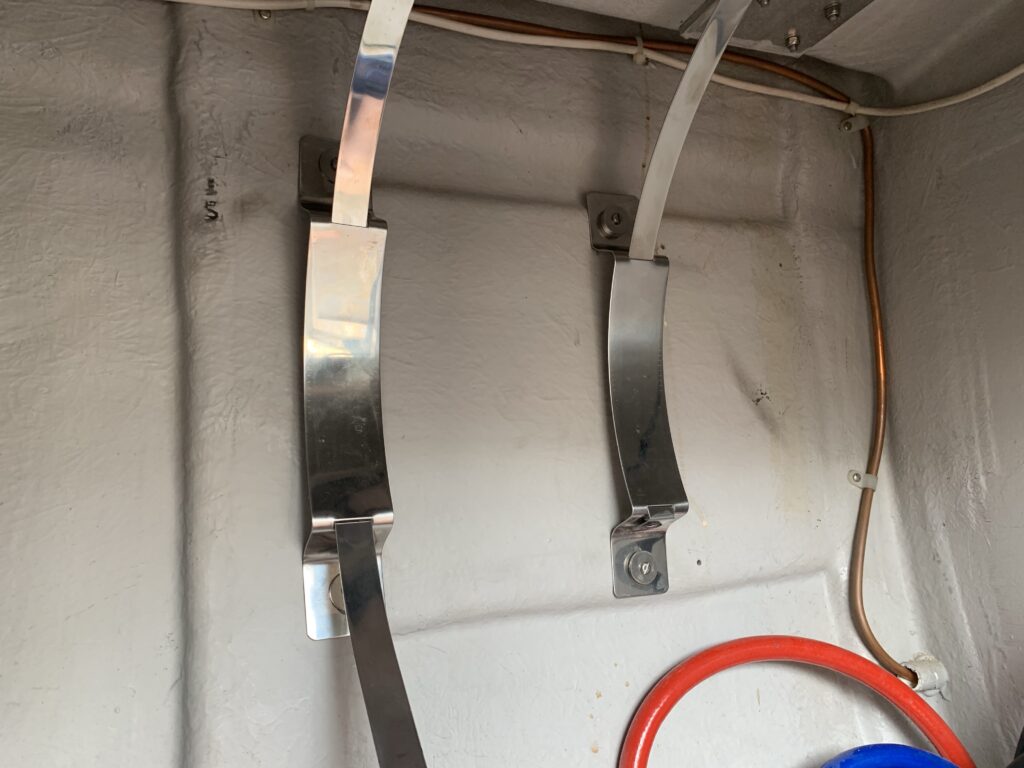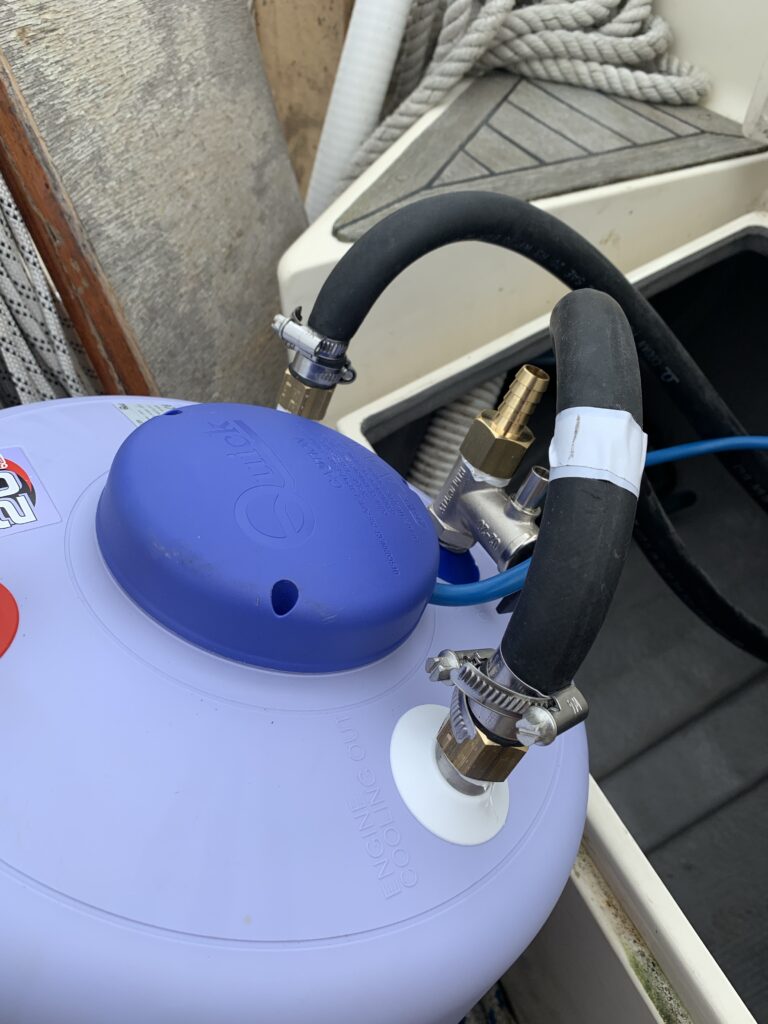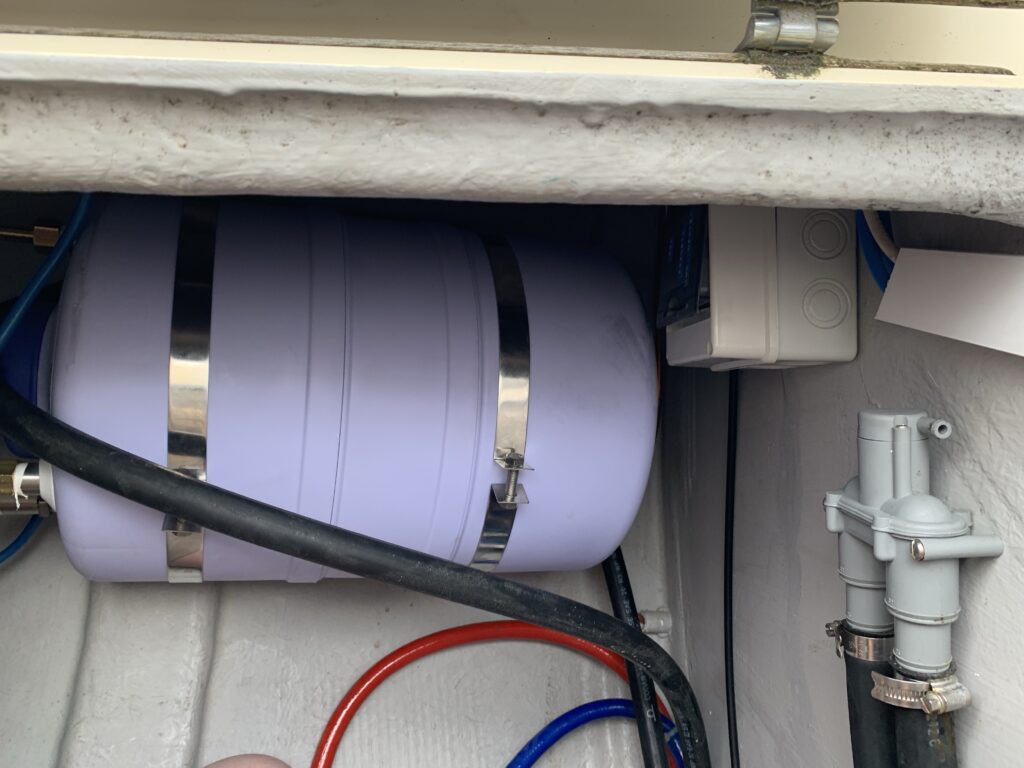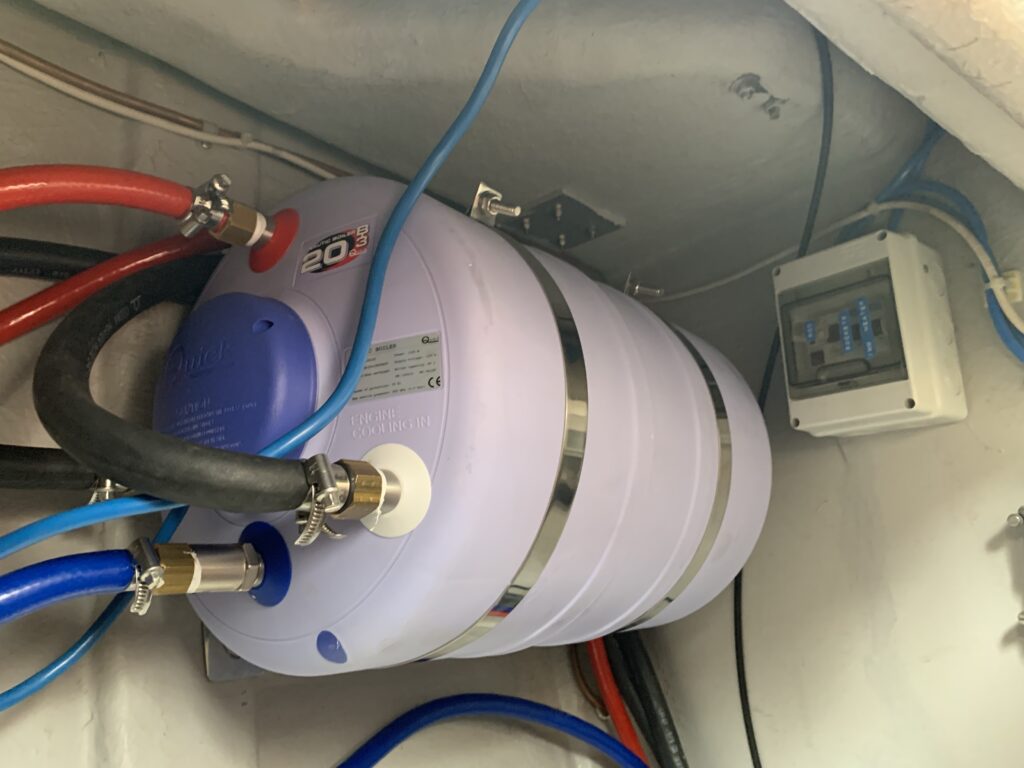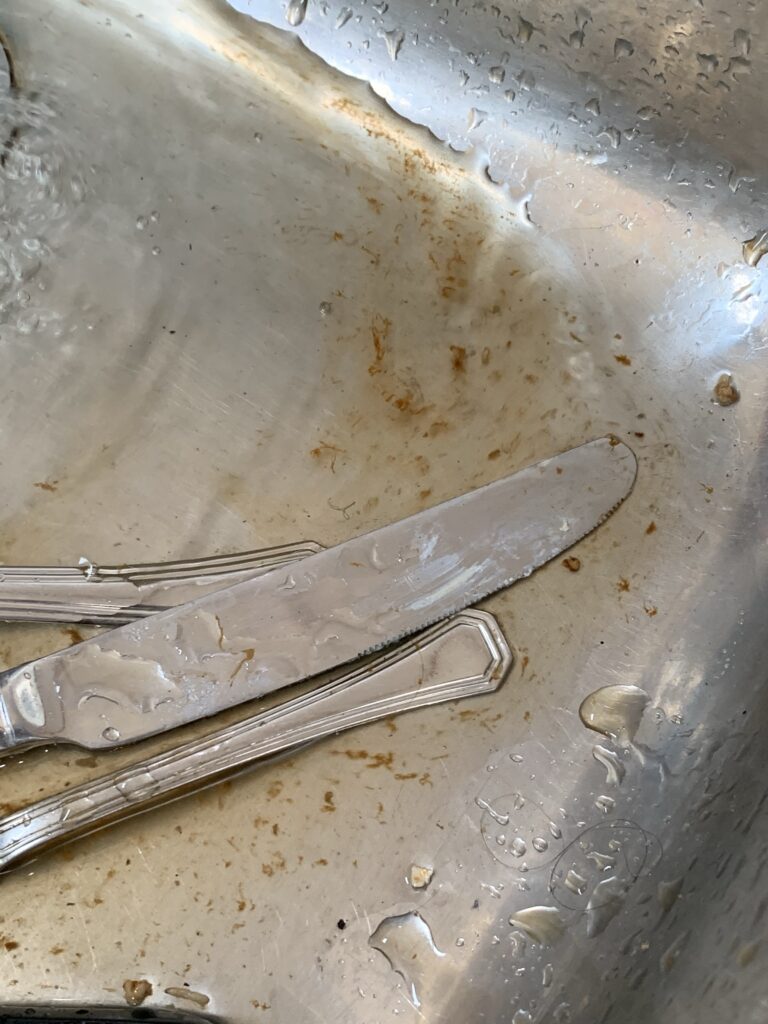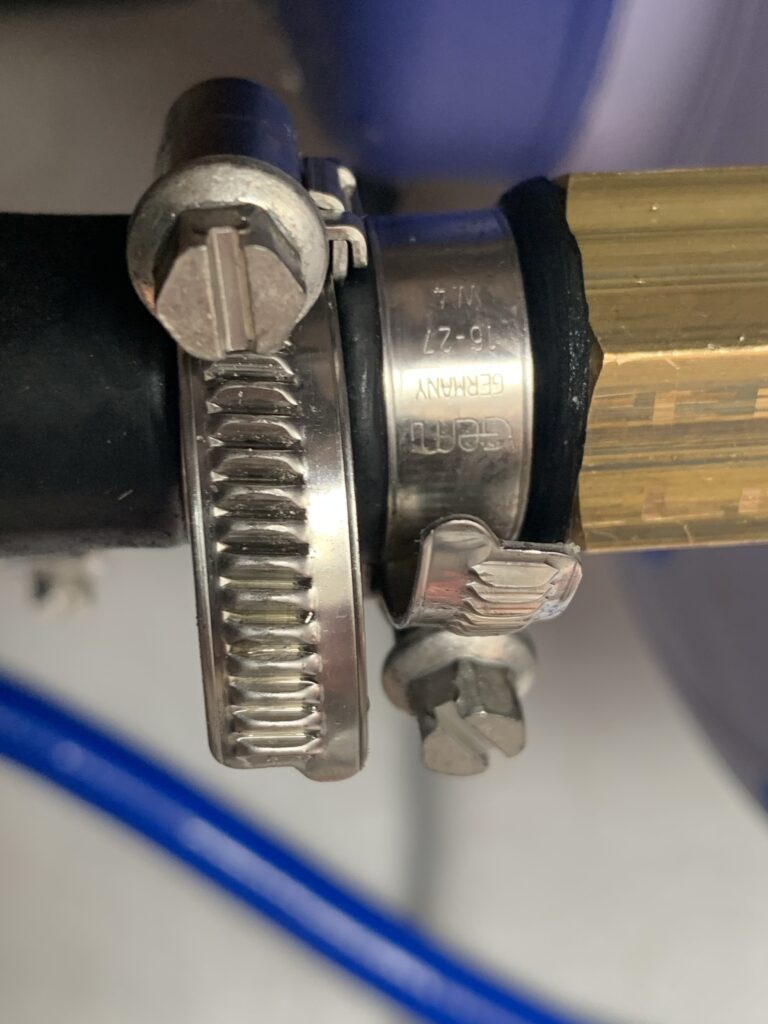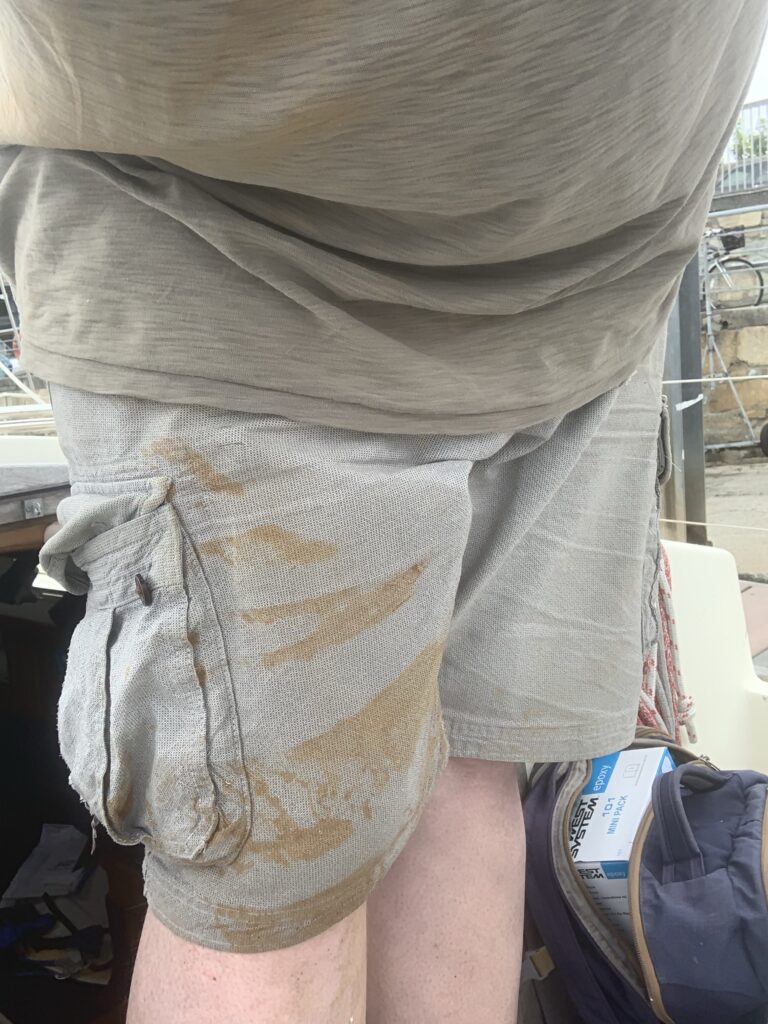Blue Opal’s calorifier tank, until yesterday, was the one that was installed when she was built. A few months ago (actually, last year.. damn COVID time travel), it started producing brown water, and I figured that was a good reason to change it out – it’s not like I could get the interior of the tank re-done. The original tank is a 16 litre Nautic of some sort, and when reading the manual yesterday, I noticed that while the 20+ litre tanks are enamelled on the inside, the 16 litre was made using a hot-dip galvanize coating. My only conclusion at this point is that the galvanise degraded somehow, and I was possibly very close to having engine coolant mixing with the somewhat potable hot water.
I climbed into the port locker to get measurements on the old tank, and after a bit of “hmmm”ing, I decided that I could probably fit a slightly larger tank, and thus have hot water for longer. I purchased a Nautic B3 20L from SVB24, plus the relevant 1/2” thread to barb adapters (Maestrini according to the invoice) to enable the engine coolant hoses and the cold/hot water hoses to be connected (the B3 comes with 1/2 inch threaded fittings), and it arrived earlier this week. Carried it all down to the club on Saturday morning, and proceeded to pull the old tank out, and fit the new tank.
One thing I must give Victoria Marine credit for – they glassed in a rib and a pad for the water tank, and so I was able to take advantage of their work when fitting the new tank. I was worried about what length screw I could use, and thought I might have to buy some from the local chandlery, but Victoria had fitted the tank with 25 mm x 4 mm panhead screws (1 inch x #8), so I figured if they worked for the original install, they’d work for the replacement install. One very noticeable thing though, is that the hot and cold hoses were connected backwards (hot to the inlet, cold to the outlet) – don’t know if that was a “from the yard” issue, or from works by the previous owner.
It took the entire day, but the tank has been swapped out. Had to borrow a second 13mm socket and driver from the club tool kit to get the straps off of the old tank, and discovered that my Halfords set has a screwdriver with a 1/4″ socket in the top, allowing the ratchet driver to be used for driving the screwdriver – very, very useful when trying to drive in the slot-headed screws into new holes in fibreglass! I’m pretty well bruised (as I really, really don’t fit into that locker very easily), but also very happy that it’s done, and that I managed to hook everything up correctly, bar the fact that I didn’t use enough PTFE on the barbed nozzles, and had to go back down today, take them all off, and apply more PTFE to the threads. Suction pressure is amazing – I was able to take the cold inlet feed off of the bottom, and only a few tablespoons of water came out, with the rest of the 20 litres held in by the lack of air intake at the top of the tank (where the hot water hose connects).
Things I’ve learnt:
- the B3 brackets need to have the straps inserted before the brackets are screwed to the hull;
- sharp knives are useful for cutting the old heating hoses when they don’t want to come off of the old fittings;
- I am more flexible than I think;
- the right technique for getting in and out of that locker, assuming I’m facing the hull, not the engine;
- while attaching the heating hoses early one seems sensible, they end up all twisted and collapsed when installed, requiring the jubilee clips to be loosened and hoses twisted;
- while I have the right technique, I’m still covered in bruises on my back and arms from levering myself out of the locker;
- I need to replace the engine coolant – it’s filthy;
- you can never have too many penny washers.
